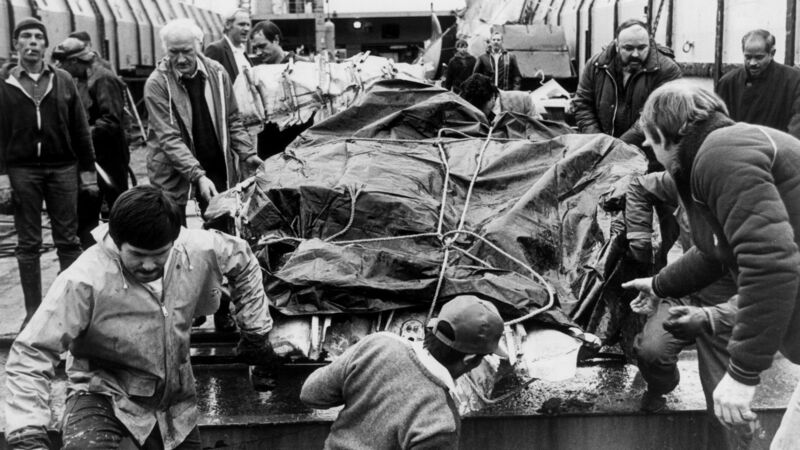Air India disaster saw Cork's emergency services rally to deal with the aftermath

Air India wreckage being brought ashore on October 31, 1985. One air traffic official at Shannon said of Air India 182: ‘One second it was there and the next it had gone. It was like suddenly losing a telephone line.’
There was nothing to indicate on the morning of Sunday, June 23, 1985, that the day would be different to any other at what was then known as the Regional Hospital at Wilton in Cork city.
Staff went about their normal duties in providing care and treatment for the patients in what is now University Hospital Cork.










